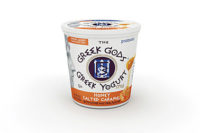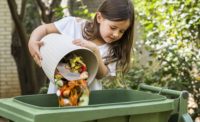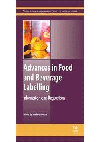Processors see the big picture in packaging
If product is spoiled or damaged, then it doesn’t matter how “green” or sustainable the packaging is. Dairy processors are moving beyond waste and recyclability and taking a holistic view of product packages.


|
|
Marva Maid Dairy, Newport News, Va., touts the environmental friendliness of its milk cartons. In December 2012, the dairy processor said it brought back the milk carton because “cartons mean better milk and a cleaner environment.” It had been using plastic. The cartons feature a barrier board that keeps oxygen out and taste and vitamins in, the processor said. The processor said more than 50% of the energy used to make the carton comes from biomass (renewable energy) and that more than 70% of the carton material comes from responsibly managed forests. |
While cost is the top factor driving the packaging industry today, sustainability concerns will dominate packaging industry work in 10 years in both Europe and North America, according to a recent study conducted by Packaging World magazine and DuPont Packaging & Industrial Polymers. Consumers also care increasingly about the environment, and they expect the products they buy to be produced in an environmentally responsible way. Milk is no exception.
According to the Industry Council for Packaging and the Environment (or INCPEN), a United Kingdom-based research organization, the notion that “sustainable packaging” exists does not make sense because packaging is just one part of the system that gets products from the point of production to the point of consumption.
Looking at packaging in isolation ignores the Big Picture requirements of sustainability. Taking a holistic systems approach allows manufacturers to look beyond narrow considerations (such as packaging waste and recycling) and to consider all of the aspects, including product waste, water consumption, energy use and the impact of transportation.
According to Peter White, Director, Global Sustainability at Procter & Gamble, “The consensus around what represents sustainable packaging has developed significantly in the past few years. The debates about lightweighting, recycled content or recyclability as the ultimate measures of how sustainable a package is have been replaced by a more holistic debate around the product, the package and their use from inception to post-consumer use.”
INCPEN Director Jane Bickerstaffe sums up a sustainable-systems approach: “Companies have shifted their attention from addressing just one issue or a selection of issues on one topic to a more holistic approach incorporating economic, environmental and social considerations.”
Make science-based decisions
“There’s no good or bad packaging,” said Anne Roulin at Pack Expo 2012 in Chicago. Roulin, the global head of packaging and design at Nestlé SA, said the trick is to find “the right packaging material for the specific application.”
In making science-based decisions about packaging, Roulin described the use of PIQET (Packaging Impact Quick Evaluation Tool) early in the packaging development cycle. This is a life-cycle assessment software tool from the Sustainable Packaging Alliance that is a key tool in Nestlé’s ECO-Design initiative. The use of this tool and the company’s sustainability goals have allowed Nestlé to save between 88 million and 154 million pounds of packaging materials.
Dordan Manufacturing, Woodstock, Ill., published a report (“How to Assess Sustainable Packaging: An Overview of The Tools and Resources Available”) which includes a useful list of sustainable packaging guidelines, analytical tools and software, including:
• SPA Sustainable Packaging Framework
• SPC Design Guidelines for Sustainable Packaging
• WRAP (Guide to Evolving Packaging Design)
• Envirowise (Packaging Design for the Environment)
• Global Packaging Project’s Global Language for Packaging and Sustainability.
Another useful tool is Dairy Plant Smart developed by a team of experts from the Innovation Center for U.S. Dairy, Rosemont, Ill., along with milk processing plants, research universities, government and NGOs. That tool is available at USDairy.com/PlantSmart.
Sustainability and packaging
“Sustainable packaging is as much about carbon footprint and life-cycle analysis of environmental impact as it is about consumer perception,” said Alan Murray, CEO of Next Foods and the former president and CEO of packaging giant Tetra Pak. “Best practice is when the development of these elements goes hand-in-hand.”
“For example, the Carton Council, founded to stimulate beverage carton recycling, first ensured that it had a comprehensive and legitimate collection and recycling scheme before starting an active consumer communication plan,” Murray said.
Bob Lilienfeld, creator and publisher of the ULS Report, the leading consumer newsletter dealing with waste reduction, said “The key to designing a sustainable package is to recognize that the first job is to ensure that the product contained by that package arrives at its intended destination in 100% usable condition with 100% maximum functionality. The second task is to do that first job with the minimum amount of materials, energy and waste.”
While packaging has a key role to play in helping society live more sustainably, a package that is reusable, recyclable, contains recycled content or is biodegradable but does not protect the product is a waste of resources.
Looking for a reprint of this article?
From high-res PDFs to custom plaques, order your copy today!









